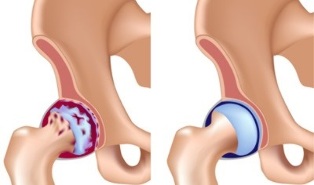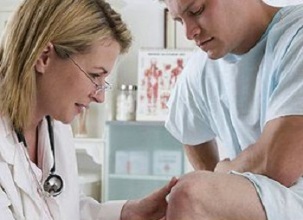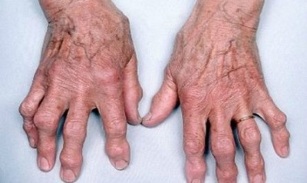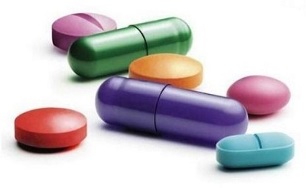These two words are quite similar in hearing comprehension, so many people who utter the words "arthritis" and "arthrosis" do not even suspect that this is a completely different disease, even though it is related to joint problems. In fact, these two diseases are very serious and it is necessary to know what is the difference between arthritis and arthrosis, if only not to get into awkward positions in conversation, because the topic of health is one of the "permanent" topics when one person communicates with another.
What is arthritis
Arthritis is a disease that strikes most people in middle age (under 40), although there may be exceptions. According to statistics, very few people suffer from arthritis, no more than 2% of the total population. However, in reality, arthritis is a severe inflammatory process in which joint problems are only visible parts of the inflammation.
In arthritis, the underlying cause of the disease is much deeper than swelling in the joints, as well as pain that does not leave the patient even at night rest (sometimes the pain only increases). This inflammation can be caused by an infection or a dysfunctional immune system. Joints are not the only organs affected by inflammation. Often a strong blow attacks a person's internal organs such as the liver, heart and kidneys. If the problem of arthritis is ignored, then it is very dangerous not only for human health, but also for his life.
What is arthrosis

Arthrosis, in general, is an age-related change experienced by a person, most often in the middle of the second half of life. Often, the mechanism of development of arthrosis is provoked by severe injury in the form of fractures and damage to the joints in people over 45 years of age.
Medical statistics say that one in three people over the age of 50 and one in two over the age of seventy suffer from arthrosis. In general, about 10% of our planet's population suffers from arthrosis. Often, arthrosis affects the knee and hip joints in the elderly. In addition, the joints of the fingers and ankles can be affected by arthrosis.
Causes of disease progression
It is clear that the causes of each disease are completely different.
For arthritis, this might be:
- Injuries of various origins, recurrent levels of injury associated with professional activity can trigger the disease;
- Infections such as tuberculosis, fungal infections, SARS, influenza;
- Vitamin deficiencies and imbalances that occur in metabolism;
- Excess body;
- Disorders of the nervous system;
- Damage to your own immune system;
- Has a genetic predisposition to arthritis.
Arthritis is a common companion in professions such as tailors, hairdressers, massage therapists, loaders, construction workers.
For arthrosis, the following factors in the development of the disease are:
- Excess weight affecting joint function;
- Poor nutrition;
- Prolonged hypothermia;
- Previously suffered (possibly long ago) various types of injuries;
- Body poisoning;
- Metabolic disorders;
- Past infectious diseases;
- Manifestations of autoimmune disorders;
- Perthes disease, which manifests itself in a variable blood supply to the femoral head;
- Disorders of the thyroid gland;
The hereditary tendency to develop arthrosis, is transmitted at the genetic level.
Severe Symptoms of Arthritis
In arthritis, there is severe pain in the joints, especially while walking or other physical activity. The joint itself swells significantly and the skin around the joint becomes hot when touched. The skin can also be red. The patient feels weak, it is very difficult for him to perform movements with the affected arm or leg. It is very difficult in the morning after resting at night. While pressing on the joint, the patient feels severe pain. During movement, arthritis-affected joints can wrinkle badly. The patient may have a high body temperature, and the patient himself may be shivering at this time. In acute arthritis, all symptoms appear simultaneously and suddenly. With chronic arthritis, symptoms increase slowly and gradually.
Symptoms of arthrosis

With arthrosis, doctors distinguish four main symptoms of the disease:
- Joint pain.The pain is severe and sharp. It starts at the moment the movement begins and stops with a transition to a state of rest. At night, a person has almost no pain, and after choosing a comfortable position, the patient can sleep soundly. The sensation of pain increases as the disease progresses. The pain is also worse in cold and rainy weather;
- Joint fractures. Due to the lack of freedom and softness of bone rotation, strong cramps are heard in the joints. Experts distinguish arthritic crunching from the "dry" type of sound. The more the disease progresses, the stronger the cracking in the joints. The peculiarity of arthrosis is that the disease is always accompanied by pain;
- Restriction of joint movement itself.With arthrosis, in many cases the limbs do not move. This is due to the fact that the growth of bone formation occurs and the joint space narrows, which first leads to restriction of mobility, and then to complete immobilization of the joint;
- joint deformation.As a rule, these symptoms are characteristic of the next stage arthrosis, as the osteophyte grows.
Clinical differences between arthritis and arthrosis
It is clear that arthritis and arthrosis have different genesis as diseases. If arthritis is the result of damage to the immune system or infectious disease, then arthrosis refers more to the disease that arises as a result of the aging process of the body. Therefore, based on this, the clinical picture of the manifestations of arthritis and arthrosis will also be different.
Finger arthritis

Thus, with finger arthritis, patients experience severe pain that does not subside during rest and rest. In addition, the skin around the affected joints turns red.
Arthritis can affect the number of joints varying from one (monoarthritis) to several (polyarthritis). Swollen joints. The reaction of pressing the joint can be a sharp pain.
Regarding cramps in the joints, it may or may not exist.
Arthrosis of the fingers
It occurs most often in the elderly, and in women, arthrosis appears about 10 times more often than in the stronger sex. The main site of localization is the joint between the phalanges of the fingers.
Any movement of the fingers causes discomfort to the patient. However, during rest, the pain is almost non-existent. The joints are swollen and there may be redness on the skin around the affected joint. Arthrosis is always accompanied by "dry" cracks in the joints.
Similar descriptions are observed in cases of arthritis and arthrosis of the toe joints.
Treatment with chondreoprotectors
In arthritis and arthrosis, cartilage is destroyed due to contact with rough and coarse bone surfaces. As a result, the synovial fluid production process is disrupted, the cartilage lacks nutrients, and the joints lose the lubrication needed for its normal operation.
Chondroprotector inhibits this pathological process. The active ingredients of chondoprotectors are glucosamine and chondroitin sulfate. The dosage form of this substance is different and can be used by a doctor depending on the condition.
Today, chondroprotectors are produced in the form:
- Solution for injection;
- Tablet;
- Creams, ointments and gels.

Condroprotective treatment should be started before cartilage completely collapses. Unfortunately, such treatment is completely useless when the cartilage is destroyed. The next thing to keep in mind when treating with chondroprotectors is the duration of treatment. The fact is that the process of cartilage recovery is quite long and the minimum treatment should be six months, but practice shows that treatment with chondroprotectors requires an average of one and a half to two years. If recovery is not completed, cartilage destruction will resume. As a rule, chondroprotectors have no side effects on the patient's body, the maximum observed in practice is mild intestinal disorders. The only complication may arise in the treatment of chondroprotectors in people suffering from diabetes mellitus. While treating it, the dose of insulin should be calculated correctly, as chondreoprotectors contain glucose. And it is also not recommended to use chondreoprotector during pregnancy, as well as for the treatment of children.
Today in the doctor's office that deals with the treatment of arthritis and arthrosis, there are a number of effective medicines for treatment.
Start treatment with chondroprotectors under a doctor's supervision, otherwise treatment may not be effective.
Treatment with folk remedies
For arthritis, traditional medicine recommends several effective recipes:
- Apple cider vinegar.This ingredient is added to the water (1 teaspoon for one glass of water). The resulting solution is drunk before meals;
- Compress the potatoes.Take the green tubers for compresses.
Wash, cut without peeling. Potatoes are heated in water at a temperature of 38 degrees. Then the compress is applied to the sore spot. The potato layer should measure 1. 5 - 2 centimeters. Need to bet at night. The course of treatment in this way is seven to ten days.
Ointment in the treatment of arthritis and arthrosis
In the early stages of the development of arthritis, as well as arthrosis, the use of ointments for external use can help in the treatment of patients. A specialist will select the appropriate medication based on the results of the examination.

























